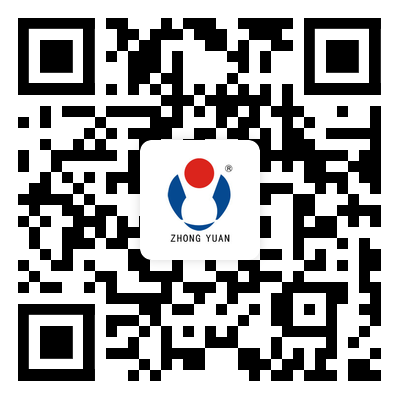- English
- Español
- Português
- русский
- Français
- 日本語
- Deutsch
- tiếng Việt
- Italiano
- Nederlands
- ภาษาไทย
- Polski
- 한국어
- Svenska
- magyar
- Malay
- বাংলা ভাষার
- Dansk
- Suomi
- हिन्दी
- Pilipino
- Türkçe
- Gaeilge
- العربية
- Indonesia
- Norsk
- تمل
- český
- ελληνικά
- український
- Javanese
- فارسی
- தமிழ்
- తెలుగు
- नेपाली
- Burmese
- български
- ລາວ
- Latine
- Қазақша
- Euskal
- Azərbaycan
- Slovenský jazyk
- Македонски
- Lietuvos
- Eesti Keel
- Română
- Slovenski
- मराठी
- Srpski језик
Pagrindiniai poliuretano elastomerų atrankos formavimo metodo principai
2021-08-11
Poliuretanas elastomer formed by the polymerization reaction of diisocyanate and active hydrogen compound, the rigid segment containing urea group composed of diisocyanate and diamine chain extender, the glass transition temperature is much higher than room temperature, and it is glassy at room temperature. Subcrystals or microcrystals form the plastic phase; flexible segments of polyether or polyester are gathered together to form the matrix or matrix of the poliuretanas rubber. Because its glass transition temperature is lower than room temperature, it is called the rubber phase. The microphase separation of the poliuretanas elastomer makes the poliuretanas elastomer have the advantages of good wear resistance, wide range of hardness, high strength and high elongation, large load supporting capacity, good shock absorption effect and excellent oil resistance. Choosing a suitable molding and processing method can maximize the performance of poliuretanas elastomers and prepare various poliuretanas elastomers with excellent properties, which are widely used as plastics, rubber, fibers, adhesives and coatings, and even as functional polymer materials. Such as medical poliuretanasmedžiagos.
1.1 Bendrieji formavimo metodų pasirinkimo principai
(1) Formavimo procesas paprastai yra lydomas arba deformuojamas polimero junginys kietoje būsenoje (milteliai arba granulės), pastos ar tirpalo būsena ir suformuojamas norimas pavidalas per formą, išlaikant gautą formą ir galiausiai gaunama produktas. kūrimo procesas.
(2) Bendras liejimo apdorojimo srautas: „Polimerinių junginių mišinio formavimo metodas du kartus gaminant produktus; „polimero junginio formavimo būdas gaminant produktus vienu metu; „Produktų gamybos iš monomerų mišinio vienu etapu metodas“ „Vieno etapo oligomerų mišinio gamybos metodas“.
(3) Apdorojimo našumas ir įtakojantys veiksniai: „išspaudžiamumas ekstruderyje, įpurškimo mašinos cilindras, kalendoriaus ritinėliai ir liejimo forma, kai medžiaga deformuojama ekstruzijos būdu, gaunama medžiagos forma ir išlaikė sugebėjimus. Ribojantys veiksniai: lydalo klampumas, apdirbimo įrangos struktūra, lydalo reologija ir lydymosi srautas. „Lankstumas, liejimo procese, veikiant įpurškimo mašinai, ekstruderiui ir suspaudimo mašinai, medžiaga deformuojasi veikiant temperatūrai ir slėgiui bei galimybei formuoti formą. Ribojantys veiksniai: reologija, šiluminės savybės ir kitos fizinės bei mechaninės savybės bei polimerinių junginių cheminis reaktyvumas. â „¢ Elastingumas, kalandruojant ar tempiant, medžiaga deformuojama kalandruojant arba tempiant viena ar dviem kryptimis. Ribojantys veiksniai: medžiagos plastiškumas ir įtempimo sukietėjimo efektas. „Sukimasis, purkštukas ekstruzijos liejimo metu, medžiagos gebėjimas formuojant ištisinius kietus pluoštus. Ribojantys veiksniai: reologija, lydalo klampumas ir stiprumas, terminis stabilumas ir cheminis stabilumas.
1.2 Bendrieji liejimo ir apdirbimo metodų pasirinkimo principaipoliuretanaselastomerai
Poliuretanas elastomer molding processing system is divided into liquid system and solid system. On the basis of the rapid polymerization reaction of diisocyanate and active hydrogen compound, the molding processing method is conducive to the microphase separation of the poliuretanas elastomer. , Liquid system, poliuretanas casting glue can be processed by casting (manual casting, centrifugal casting and vacuum casting), reaction injection molding, spraying, knife coating, roller coating, laminating, laminating, bonding, vulcanizing, pasting and rubbing ; Solid system, poliuretanas compound rubber can be vulcanized and laminated with mold, poliuretanas thermoplastic can be used with thermoplastic, hot injection, calendering, blow molding, spinning and lamination.
1.3 Pagrindinių tipų ir liejimo apdirbimo metodų atitikimo principas
Poliuretanaselastomeras yra didelis polimeras tarp plastiko ir gumos pagal savo modulį. Tai daugiausia apimapoliuretanas compound rubber, poliuretanas cast rubber, poliuretanas water emulsion and poliuretanas thermoplastic. Poliuretanas leather, poliuretanas adhesives, poliuretanas coatings, poliuretanas compounds, poliuretanas casting glues, poliuretanas fibers, poliuretanas water emulsions and poliuretanas thermoplastics are all derived from the above four types of glue. The molding and processing methods of poliuretanas compound rubber, poliuretanas water emulsion and poliuretanas thermoplastic generally belong to the molding processing methods of rubber, coatings and plastics.
1.4 The use of poliuretanas elastomers and the matching principle of production continuity and molding processing methods
Poliuretanas elastomer molding and processing methods are matched with the use of poliuretanas elastomers, taking into account the continuity of production. For example, poliuretanas leather molding methods usually use poliuretanas casting adhesive or foaming layer, poliuretanas water emulsion and poliuretanas thermoplastic as the surface layer; also available Poliuretanas thermoplastic and poliuretanas water emulsion are used as leather separately, which are based on the basic rubber molding processing method, supplemented by foam molding processing, usually calender molding processing method is selected. Poliuretanas paving materials are made of poliuretanas casting glue, mainly due to the large product shape and low precision requirements. Medical poliuretanas materials have good chemical stability, tissue compatibility, and resistance to biological aging, so the molding process uses dip coating, pouring and coating methods.




